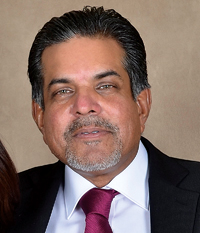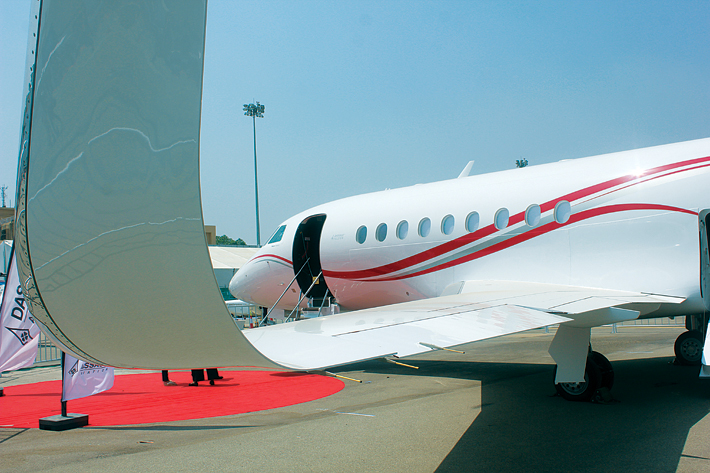INDIAN ARMED FORCES CHIEFS ON
OUR RELENTLESS AND FOCUSED PUBLISHING EFFORTS

SP Guide Publications puts forth a well compiled articulation of issues, pursuits and accomplishments of the Indian Army, over the years

I am confident that SP Guide Publications would continue to inform, inspire and influence.

My compliments to SP Guide Publications for informative and credible reportage on contemporary aerospace issues over the past six decades.
ONE-ON-ONE
Rohit Kapur, President of Business Aircraft Operators Association (BAOA)
SP’s Aviation speaks to Rohit Kapur who has taken over as President of Business Aircraft Operators Association (BAOA) for the third time. During the conversation the new President of BAOA indicates on the journey the association has had till now since its inception in March 2011. He recalls the evolution process and lists down certain achievements while some of the crucial goals still remain to be achieved.

“No country can hope to become the third largest aviation industry in the world, without the simultaneous growth of the BA industry. If you look at the US, China and Brazil, you will understand what we are referring to.”
SP’s Aviation (SP’s): Can you quickly list down the key objectives of BAOA as of today?
Rohit Kapur (Kapur): The key objectives of BAOA remain the same, that is, facilitating the growth of business aviation in India. This includes interacting with Directorate General of Civil Aviation (DGCA) and other regulatory bodies to create favorable rules and regulations for our operations, lobbying with various government bodies to create a favorable environment for the industry, and document the growth of business aviation in the country and how it helps in the overall growth of the economy of India.
SP’s: You have taken over as the President of BAOA for the third time, since the inception of the organisation. Can you take us through the journey since then?
Kapur: BAOA was formed in March 2011 after merging two other associations which were representing the industry, but not in a focused way. The industry came together to form a new body, and BAOA was created. At inception, it had about 27 members, which included mainly Indian operators. Today, BAOA has about 84 members, which include all major operators, the support services, and the OEMs. BAOA received recognition from IBAC (International Business Aviation Council) in 2011, as the representative body for business aviation in India. IBAC is the umbrella body for all Business Aviation Associations, worldwide, and is co-located with ICAO in Montreal.

The journey has been satisfactory so far. We have much to be proud of. One of the immediate aims was to be recognised as the principal point of contact for all stake holders for representation of all matters pertaining to business aviation in the country. We have been fairly successful in that, and today are a part of all major interactions with government bodies and other stake holders to represent the view point of the business aviation community. We now have regular interactions with all stake holders, and have managed to get some substantial policy changes initiated to ease the growth of our industry. We still have a long road ahead, as the perception battle still carries on to convince the Government of India (GOI) that business aviation is a tool for economic growth in the country, and should be viewed as such. We need the GOI to ease out custom duties on aircraft imports, lower charges for day to day operations and facilitate equitable treatment to BA at airports as compared to the scheduled airlines. The list is endless, but we continue to strive to make things better for our industry. We are confident that we will get there, slowly, but surely.
SP’s: How do you view the journey till now in terms of successes and failures in meeting the very objectives of BAOA?
Kapur: Some part of this question is answered above. However, to sum up, the biggest achievement has been the to give the industry a unified voice to represent all industry matters. Our challenge, at the moment, is get more predictability in rulemaking as we still get some surprises from the Regulators which becomes a huge issue for day to day operations. We also want the GOI to help us to get more access to airports, especially airports like Mumbai and Delhi, which are now being operated by private operators. They must understand the relevance of business aviation in the overall growth of the aviation industry in the country. No country can hope to become the third largest aviation industry in the world, without the simultaneous growth of the business aviation industry. If you look at the US, China and Brazil, you will understand what we are referring to.
WE STILL HAVE A LONG ROAD AHEAD, AS THE PERCEPTION BATTLE STILL CARRIES ON TO CONVINCE THE GOI THAT BUSINESS AVIATION IS A TOOL FOR ECONOMIC GROWTH IN THE COUNTRY, AND SHOULD BE VIEWED AS SUCH
It is also unfortunate that the growth of the helicopter industry has been neglected by the GOI. In 2011, India had 300 civil helicopters with growth projected to 600 helicopters by 2016. Today, we have only 285 helicopters. In a country which has large inaccessible terrain, poor road infrastructure and limited number of operational airports, it is unimaginable that the helicopter industry has not boomed. The GOI must reflect on the reasons for this.
SP’s: The perception that business aviation is meant for rich people. Do you see any change in this by now? Can you say that the change if any is now helping enabling the path of growth for business aviation in India?
Kapur: Perception takes a long time to change, and we are trying our level best to fight it. Even in the US, where business aviation is decades old, the perception battle continues, though to a lesser extent. To address this issue, BAOA initiated the first ever study to document the growth and contribution of the business aviation industry towards nation building, and growth of the economy. This was a stellar effort, with no real data available previously. The report was prepared by BAOA, along with our knowledge partners, Martin Consulting, and we can proudly say that it has been well received by the concerned bodies and also globally. We hope this will help to present our case for perceptions in a a better light to the GOI.
SP’s: The government has come up with various policies including — ease of business environment, national civil aviation policy, UDAN which aims to serve regional connectivity, and so on. Where do you see business aviation is benefitting with these? To what extent the business aviation is getting acknowledged within the referred policies?
Kapur: NCAP 2016 was a disappointment for our industry, as we did not see any path breaking policies to foster the growth of the business aviation industry, or the helicopter industry in India. We have represented the same to the Ministry. While we applaud the Ministry of Civil Aviation to make the effort to put a policy in place, we do hope that they will include our concerns as the policy evolves. UDAN has also bypassed business aviation in the first phase, as the government’s focus has been towards regional connectivity, and this is something that the airline industry is more suited to do. Once the remote connectivity phase starts, where the requirement of aircraft of 19 seats and below will be required, we hope the government will be able to create an environment for participation and utilisation of the excess capacity that is available with the BA & GA industry.
SP’s: Can you list down the most crucial issues that hurt (if they really do) the growth of business aviation?
Kapur: Mainly, the import duties on aircraft, parking issues and accessibility at Mumbai airport, and the high cost of ground handling services at various airports. We would also like the e-governance project of DGCA to be implemented soon, as the present system involves too many man hours wasted in getting simple clearances, which can easily be done online. It also subjects the decisions to subjectivity and interpretation by various officials, and which can lead to an unhealthy system of “undue favour seeking” in the system. We are hopeful that with the egovernance in DGCA in place, all this will be eliminated.
SP’s: How do you plan to take up these issues with the government, and concerned authorities/regulators?
Kapur: We have a system of regular interaction with various government bodies and project our issues accordingly We are also part of various industry bodies such as FICCI, ASSOCHAM and CII to present out case to the government.
SP’s: The business aviation does exist in the country despite some grave challenges. Where do you see business aviation if such challenges have been taken care of?
Kapur: There is a huge need for business aviation in this country. With the remote and interior parts of the country opening up for economic activity, and the limited air connectivity, the only way for investors to access these areas is by business aviation aircraft and helicopters. In our study presented last year, we had given a case study of how a small and remote town of Raigargh in Chhattisgarh become a major industrial town, only due toe accessibility of the town by business aviation, and the major economic benefits it has reaped due it. This study has been used by IBAC in international forums to present the case for business aviation across the world.
If the government opens up this sector, the growth of business aviation in India can be a healthy 15 per cent CAGR (compound annual growth rate), as compared to the low 2-3 per cent in the last few years. This can create thousands o jobs in the country, besides adding to the GDP (gross domestic product) by contributing to economic activity across the length and breadth of the country. Helicopters can contribute towards tourism, medical evacuations, road construct and power line cleaning in remote areas. The possibilities are endless. It is time the GOI understands this, and starts looking at the business aviation industry, besides its focus on the airline industry and the UDAN scheme.





